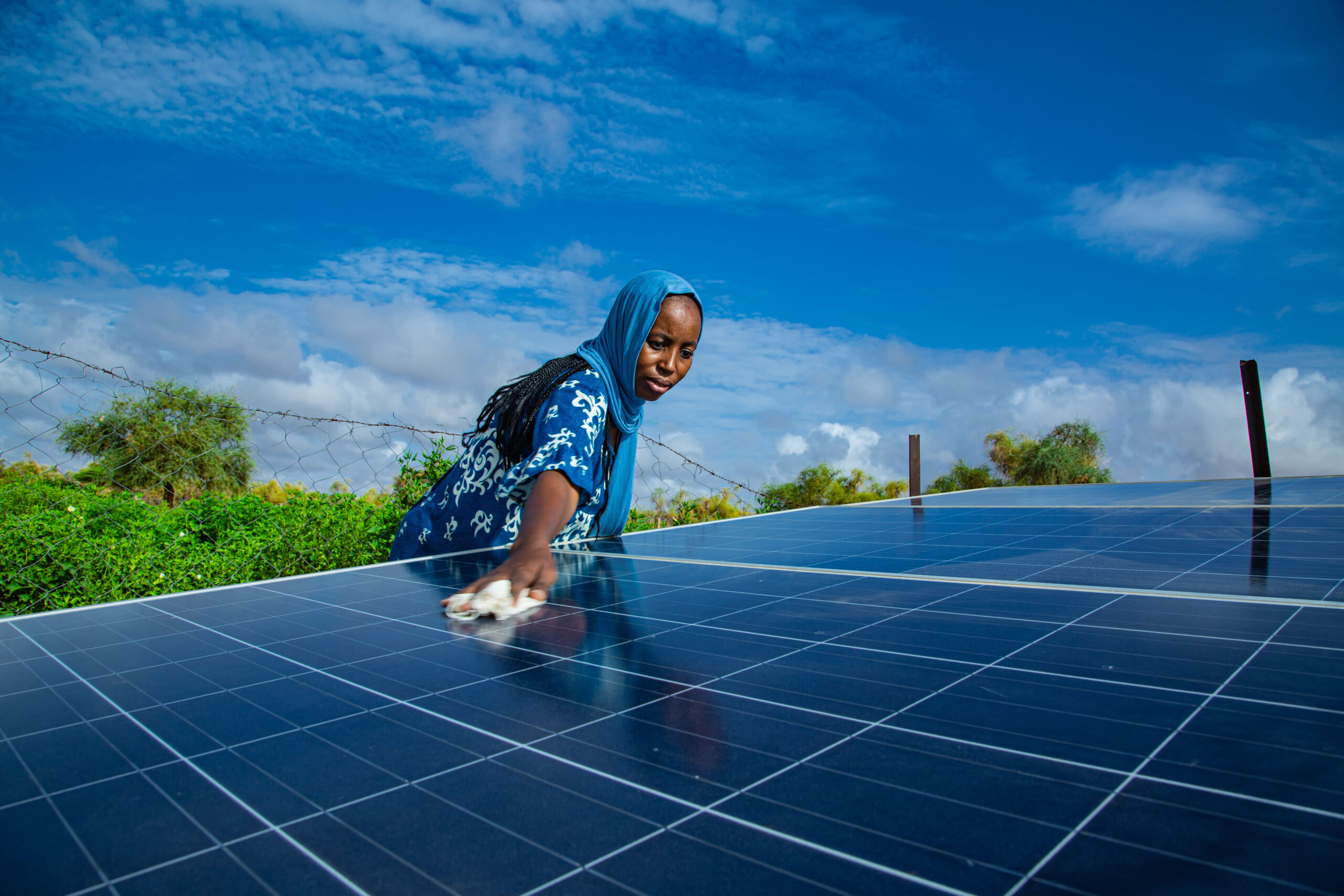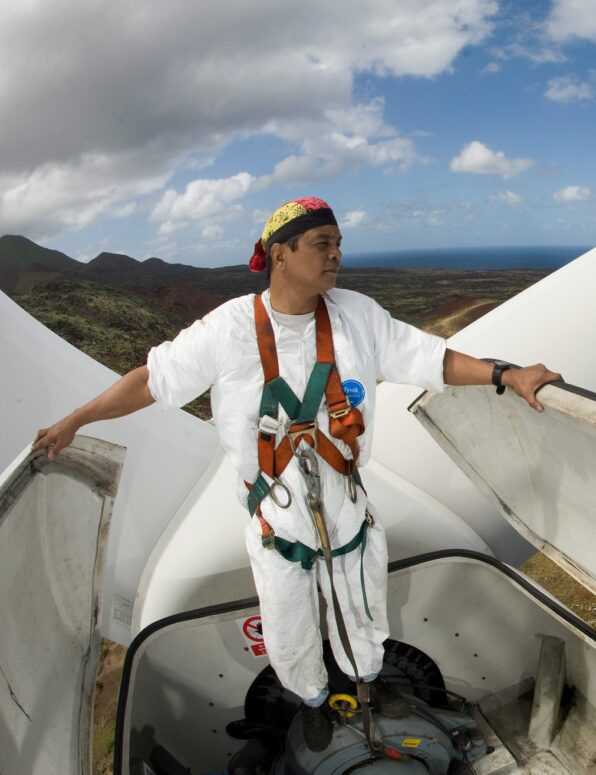From Shortages to Solutions: Good Green Jobs and Labour Migration in Cities

Training Local Workers and Supporting Migrants to Fill Green Jobs Could Contribute $280 Billion to City Economies by 2040
New research released today by the Mayors Migration Council, C40 Cities, and the Climate Migration Council provides first-of-its-kind data on green job shortages in construction, transportation, and waste in 25 cities across seven countries. The report, From Shortages to Solutions: Good Green Jobs and Labour Migration in Cities, identifies two key changes needed to avoid the predicted labour shortages: providing skills training for existing local workers, and removing the barriers to migrant employment.
“This report makes clear the huge economic potential of green jobs—for cities and for national governments,” said Vittoria Zanuso, Executive Director of the Mayors Migration Council. “But to unlock that potential, we need bold investment in workforce training and the political will to attract new talent. As we look to the future of work and a thriving green economy, that means building inclusive training programs for both local and migrant workers—and creating regular migration pathways to fill critical labour gaps.”
Key FindingsThe research, which looks at projected workforce demand by 2040 in 25 cities across Brazil, Colombia, Italy, Kenya, Mexico, South Africa, and the United States, finds:
- Urban climate action is projected to create 13 million green jobs in cities. 13 million green jobs will be needed by 2040—in the Construction, Transport, and Waste sectors alone—if Climate Action Plans and country-level NDCs are delivered as planned. Green jobs will represent nearly half (43%) of all jobs in the sectors studied.
- Up to 6 million additional workers will be needed to meet the green job demand. Growing demand will create unprecedented labour shortages with 3 to 6 million jobs unfilled by 2040. Failing to address these shortages would present a missed opportunity both for workers and local economies, and could stall the green transition.
- Labour shortages can be addressed through a two-part solution: Training existing workers and supporting migrant workers to access opportunities. A 50% increase in public investment in training and skills-building could bring down shortages from 6 million to 3 million. To close the remaining gap, barriers need to be removed for migrants to access green jobs and labour pathways.
- Filling the green jobs gap could lead to $280 billion in economic growth for cities. The 25 cities studied could see up to $280B USD in economic growth by 2040 by addressing these labour shortages through a combination of skills training and inclusive immigration policies. This opportunity should not be left on the table.

CITY RESULTS
Nairobi (Kenya) could experience more than 530,000 labour shortages for needed green jobs, including constructing railways, potable water infrastructure, and wind energy systems. Addressing this labour gap could unlock $14 billion in economic activity for the city.
São Paulo (Brazil) could experience 1.3 million labour shortages for needed green jobs, including installing EV charging points and manufacturing and operating buses. Addressing this labour gap could unlock $33 billion in economic activity for the city.
Johannesburg (South Africa) could experience more than 490,000 labour shortages in needed green jobs, including installing solar panels, collecting waste, and installing grey water systems. Addressing this labour gap could unlock $14 billion in economic activity for the city.
Quotes from authoring organizations and city leaders:
C40 Cities Executive Director Mark Watts said: “Taking action on climate change and building a fairer society go hand-in-hand: with the right investments climate action creates enough jobs for everyone. The global shift to a cleaner economy presents a powerful opportunity not just to cut our emissions, but also to address social inequalities. This new report highlights that by investing in job training for local workers and welcoming new talent, including migrants, cities can close a looming skills gap. This approach can unlock a multi-billion dollar economic opportunity by 2040, ensuring that everyone benefits from a thriving, inclusive, and more sustainable future for our communities.”
Mayor of Bogotá, Carlos Galán said: “The political significance of both migration and climate action today demands bold, pragmatic, and integrated responses: driving the creation of good green jobs, investing in local skills training, and making opportunities accessible for all residents, including newcomers. This research provides Bogotá with essential evidence, alongside past C40 and MMC studies on our city’s projected climate migration patterns, to plan ahead, harnessing the opportunities that both climate action and migration offer to our city.”
Mayor of Madison, Wisconsin, Satya Rhodes-Conway said: “We are proud of Madison’s leadership in delivering climate action which not only cuts emissions but creates more opportunities for good-paying, high-quality jobs for all. However, as this research shows, there is still more to be done for cities to meet our ambitious climate goals. Workforce development efforts, which we are proud to be pushing forward through our GreenPower Program, are a key priority. But like all cities, we know that it will be essential to ensure that green skills and job opportunities are accessible for all, including newcomers, to ensure our city’s diverse workers are able to benefit from these opportunities.”
Mayor of Milan, Giuseppe Sala said: “Milan, like many cities in Europe, has long benefitted from labour mobility, both domestic and international. Foreign-born residents and migrant communities already contribute greatly to our growing green economy, especially in sectors like construction, transport and water and waste. The research provides additional evidence on the need for legal and safe migration pathways to respond to the increasing demand for workers in good green jobs in cities.”
Governor of Nairobi, Sakaja Johnson said: “As Nairobi’s Governor, my priority is practical climate action that protects residents and creates green jobs—especially for our youth who make up a majority of the population. Through innovative research and projects like City of Choice, we show how linking climate, migration, and skills can shape the future of cities worldwide. We are building a resilient, inclusive city that sets an example for urban futures in the region.”
Mayor of São Paulo, Ricardo Nunes said: “The City of São Paulo has been consistently advancing in the climate change adaptation agenda, with continuous investments in environmental initiatives. The city is moving forward with actions such as the Green Package, which includes the planting of thousands of trees, the creation of urban forests and conservation units, the expansion of the replacement of diesel bus fleets with electric and biomethane-powered ones, as well as the modernization of waste collection with biomethane-powered trucks.
“Currently, the capital already has more than 50% vegetation coverage and stands out as a reference in sustainability among the world’s major cities. This effort is also reflected in the job market through the creation of green jobs, largely driven by municipal public policies.
“These jobs contribute to the city’s performance, which now has the lowest unemployment rate in its historical series, 5.4%, and the best average salary balance in Brazil. São Paulo not only talks about a sustainable future but also demonstrates in practice that it is possible to combine economic growth, job creation, and environmental care.”
